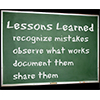 (September 2021) – As you can imagine, the majority of the sessions at the AHRMM conference recently centered around, or at least ended up, talking about how the healthcare supply chain handled (and unfortunately still is handling) the COVID-19 pandemic.
(September 2021) – As you can imagine, the majority of the sessions at the AHRMM conference recently centered around, or at least ended up, talking about how the healthcare supply chain handled (and unfortunately still is handling) the COVID-19 pandemic.
As you all know, our supply chain has never been as visible or under as much scrutiny as it has been over the last 18 months or so. Most of this is because of disruptions and unprecedented demand increases globally, not just in our country or even in our local areas. Things that are usually inexpensive and easy to get were all of a sudden hard to source and became expensive. Most of this was due to a major disruption in manufacturing and logistics with COVID running rampant in the manufacturing areas.
Then, the industry put protective allocations on getting the supplies and personal protective equipment hospitals needed, which worked fairly well in some cases, but left rural health care facilities, nursing homes and other long-term care facilities unable to provide necessary supplies. Nearly all of these types of health care facilities had never purchased most of this type of PPE. If they had, they may have had a case on hand that lasted them years in some cases.
Currently, we are now experiencing other shortages that aren't PPE. Oxygen in some areas of the country, anesthesia circuits are a couple of things that come to mind.
The following are the things I heard from the speakers' sessions that I attended:
- We need to be more agile and more flexible in using other vendors (hopefully contracted if possible). This will help protect your facility financially and keep vendors accountable.
- When using non-traditional suppliers, develop a process to vet these vendors. In our case, our group purchasing organization was very helpful distributing information, including a list of vendors they had previously vetted for their members.
- Make your vendor a strategic partner by holding them accountable and you accountable to them. Collaborate with them for future disaster planning. Consider storage options, product rotation and action plans. Some vendors and distributors are offering off-site stockpile options, as well as medical-grade storage environments. One of the things that worked well for us was "preordering" some PPE three or four months ahead of time. To be honest, I felt dumb doing it at the time. Now, I am so glad I did.
- Instead of considering other local health care organizations as competition, work with them to help keep your community and clientele safe. I found myself doing this with clinics, dentists, nursing homes, the police department, schools, etc. They had some things early on we needed, and I was able to work with them on the things they needed.
- Work with your staff to help them understand what clinically acceptable vs. clinically preferred is. Help them to realize what is preferred, may not be available right now.
- Communication with other departments is also a key element. Make the supply chain more visible and transparent to the entire organization. Help them to understand that hoarding and panic buying of supplies is not the answer. You don't need a year's worth of PPE in one department. Hoarding and panic buying is the cause of many shortages. As one speaker said, there never was a toilet paper shortage. It was media-based panic fed by profiteers to promote consumers to buy and hoard toilet paper. In some cases, the same was done with PPE. Hopefully, no one got burned too badly with those tactics.
- One of the last pieces of advice is to look at the future "glocally." Predict how global events may impact your supplies and the ability to get them locally.
Many of these ideas will become a major topic of sessions and roundtables over the next few years I am sure. I know some of the topics at our Golf for Education event, Oct. 11 and 12 in Salina, will cover some of this. I hope to see you there.